On 15 April 2021, the status report meeting on the first phase of the Digital Preservation Project for Gautama Monastery (Qutan si) in Qinghai Province was held at the Palace Museum in the Studio of Esteemed Excellence (Jingsheng zhai) in the garden of the Palace of Established Happiness (Jianfu gong). Lou Wei, managing deputy-director of the Palace Museum, and Zhu Hongwen, deputy-director of the Palace Museum, were both present at the meeting. Ren Wanping, deputy-director of the Palace Museum, was present and spoke at the meeting while Wang Hao, deputy-director of the Palace Museum’s Department of Palace Life and Imperial Ritual, presided over the meeting. Also present at the meeting were representatives from the Qinghai Provincial Cultural Heritage Administration, Qinghai Province Museum, Qinghai Provincial Archaeological Institute, and related entities.
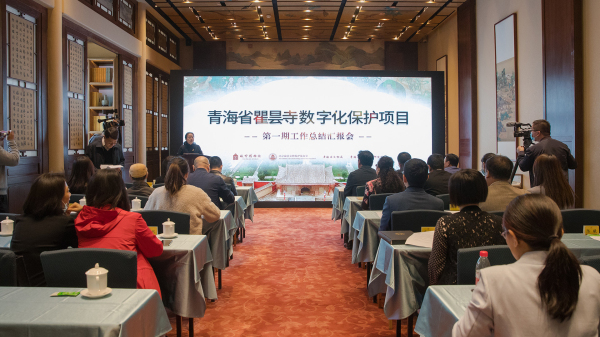
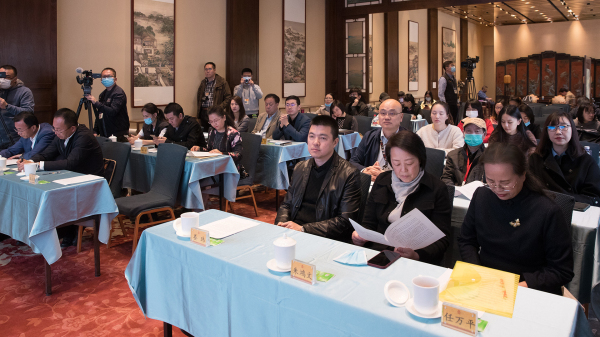
Gautama Monastery was constructed in the Hongwei reign (1368–1398) of the Ming dynasty (1368–1644). Covering over 2,300 square meters, the monastery’s extant murals are the most important treasury of Sino-Tibetan art and culture in the eastern part of the Qinghai-Tibetan Plateau. In 1982, the monastery was listed among the second group of important cultural heritage sites under state protection.
At the end of 2016, the Palace Museum, Qinghai Provincial Cultural Heritage Archaeological Institute, and the Culture, Tourism, and Sports Administration of Ledu District in Haidong, Qinghai Province signed a cooperative agreement for the acquisition and production of digital data from Gautama Monastery in Qinghai Province. According to the agreement, from 2017 to 2020 the Palace Museum’s Research Institute for Tibetan Buddhist Heritage would gather high-definition data from the approximately 2,300 square meters of murals from the Ming and Qing (1644–1911) dynasties in Gautama Monastery as well as build a database for the digital preservation of the cultural heritage.
The project combines control points based texture mapping, digital close range photogrammetry, 3D laser scanning, and a variety of other digital techniques to comprehensively preserve the information in the murals; the resulting high-definition images are then digitally archived, which not only solves the problem of accurately recording cultural heritage information but, moreover, creates a 1:1 original record of the painting techniques, lines, colors, and other features of the works while demonstrating the advanced artistry of the Ming dynasty, completely preserving the precious cultural heritage information in the digital world, and utilizing digital resource management platforms to provide unified management, utilization, research, exhibition, and multiple applications for the massive amounts of data collected on multiple occasions.
The first phase of the project collected digital data from the extant murals in the Hall of the Gautama Monastery (Qutan dian), Hall of the Buddhas of the Three Ages (Sanshifo dian), Great Bell Tower (Dazhong lou), Great Drum Tower (Dagu lou), and the east and west walkways (huilang). Through the recording of the murals’ shape, color, and texture and by permanently preserving the information, researchers, artisans, and the public are able to eliminate the need for an on-site presence and achieve the goals of research, observation, reproduction, and appreciation.
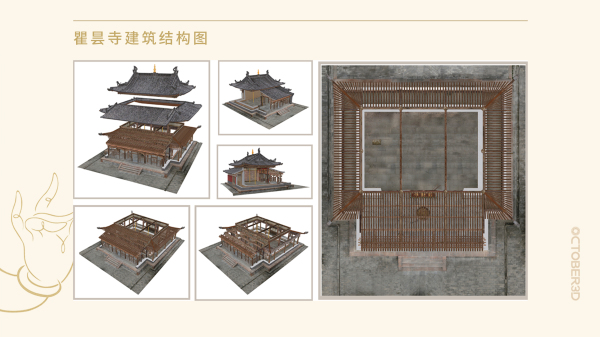
Currently, the project team has already completed data collection of murals in the Hall of the Gautama Monastery, Hall of the Lustre of Gems (Baoguan dian), Hall of the Prosperous Nation (Longguo dian), Vajra Hall (Jingang dian), and the east and west connecting covered walkways (chaoshou youlang) as well as three-dimensional digital data collection of five steles, fifteen newly discovered mani stones, and nine stone foundations of the Hall of the Gautama Monastery, Hall of the Lustre of Gems, and Hall of the Prosperous Nation. During the data collection, each wall, spread, and piece of the mural was meticulously catalogued to guarantee the accuracy of the digital record. Each mural was also identified with its specific position in the temple halls. In addition to high-definition images, the database also includes surveying and mapping data, deep data on the current state of the murals, and other information, all of which will lay a foundational database for the future observation, preservation, management, and research of the Gautama Monastery.
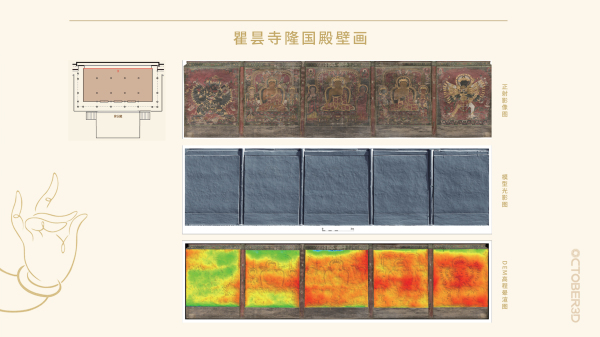
In the future, the parties will continue the collaborative project with data collection on the remaining ceilings, beams, and the murals between corbel-brackets as well as on the collection of removable cultural heritage. The project, with its comprehensive recording techniques, will create the first complete and accurate archive of the monastery’s murals, which will not only provide a guarantee for the preservation of the architecture and cultural heritage of Gautama Monastery but also lay a solid foundation for publicity, research, and exhibition.
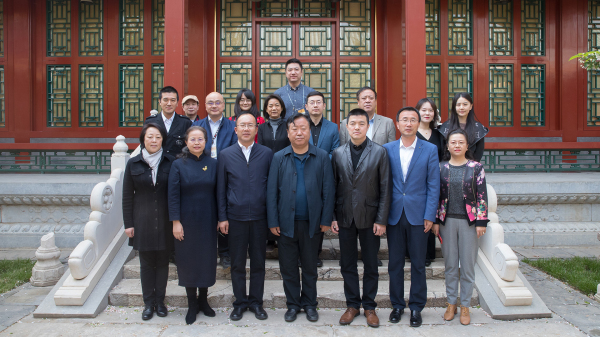
Translated and edited by Adam J. Ensign and Kang Xiaolu



